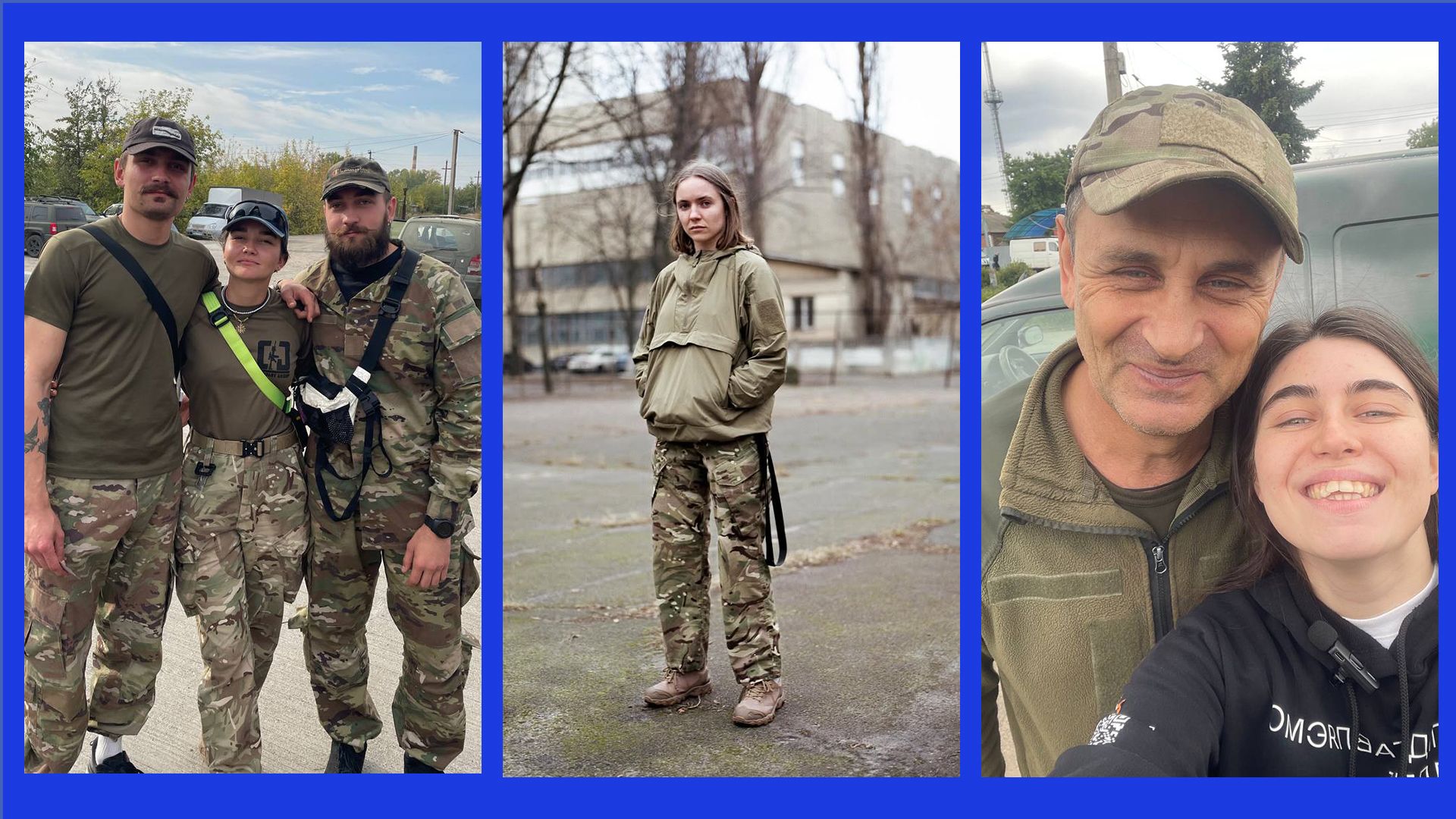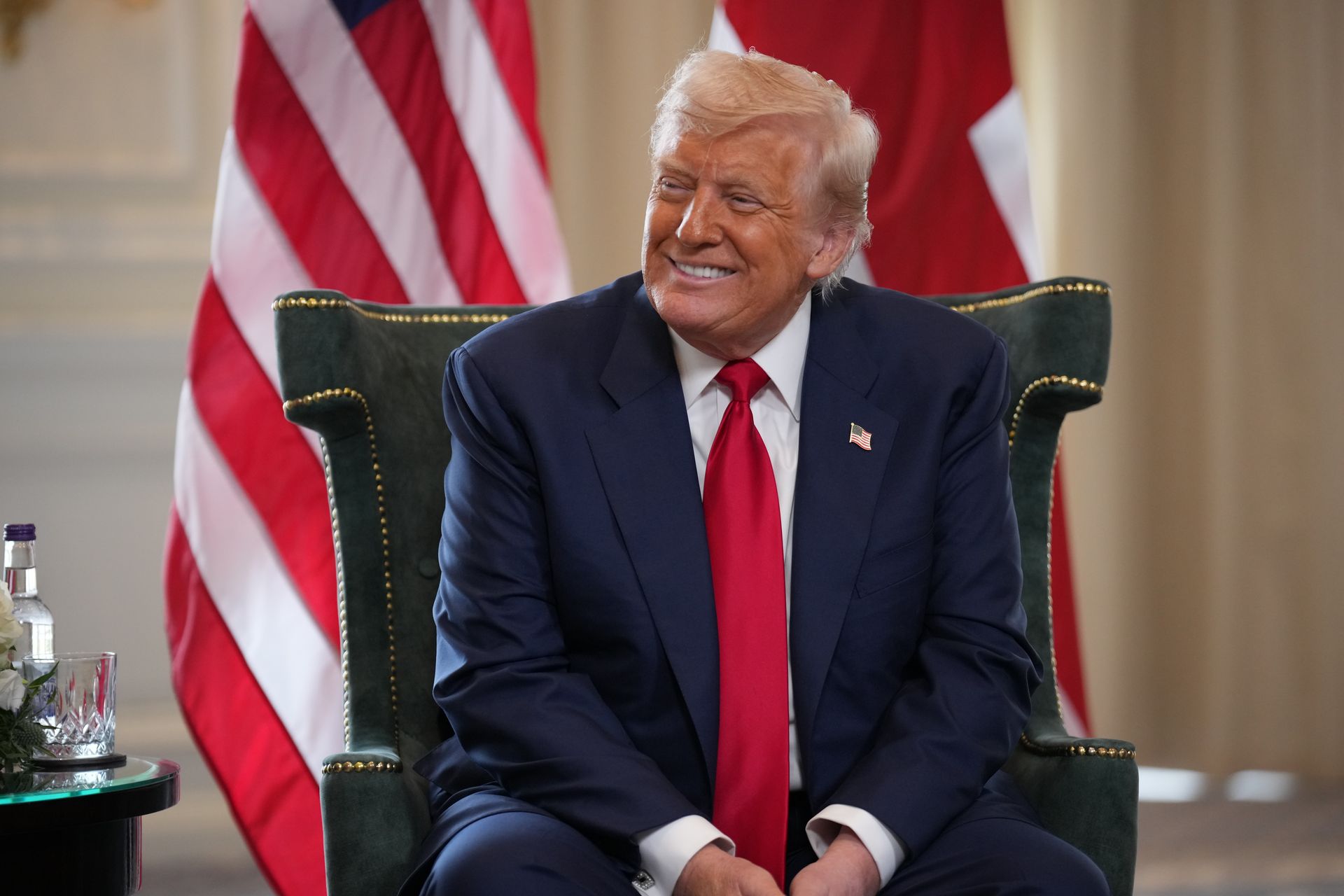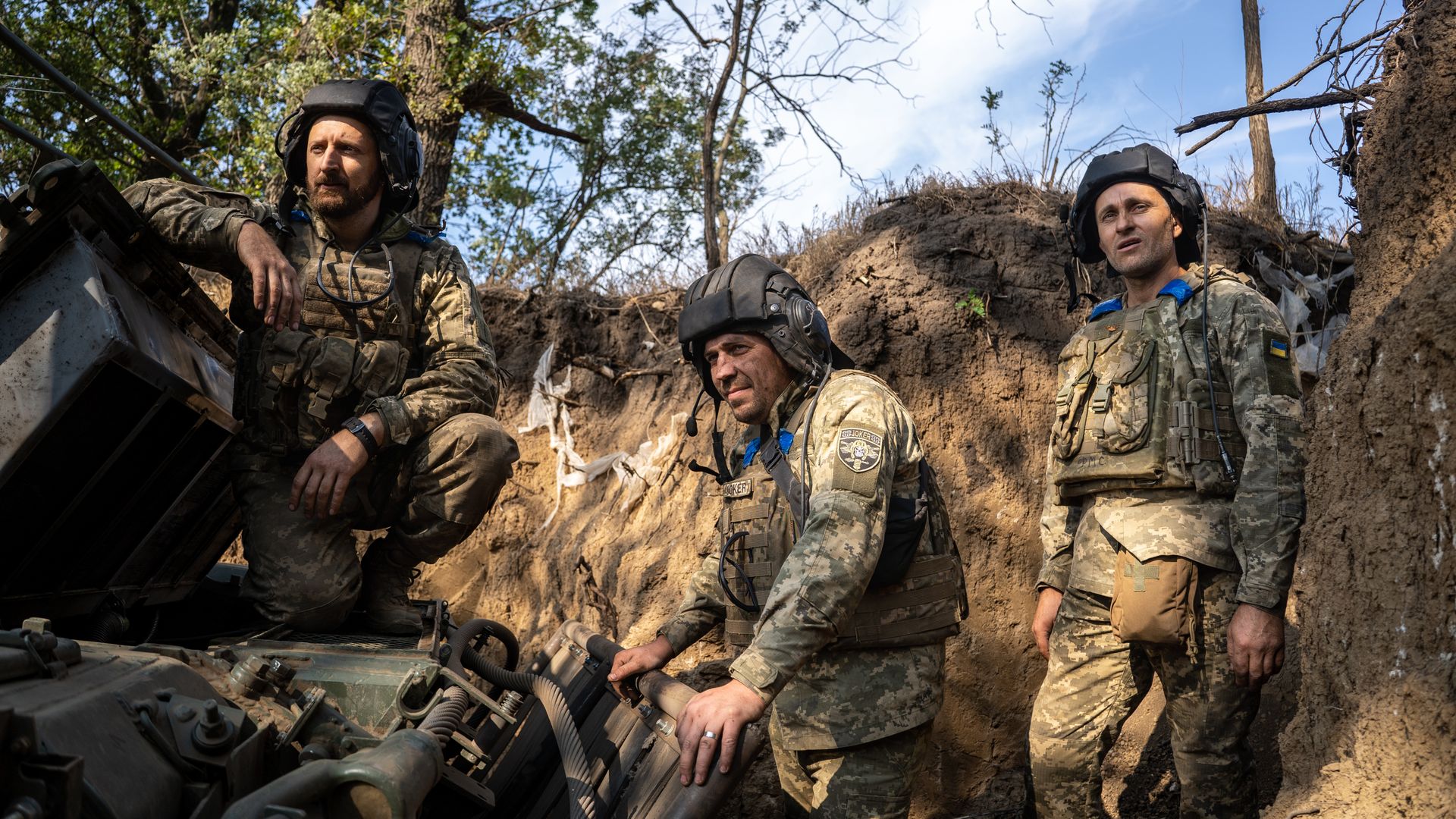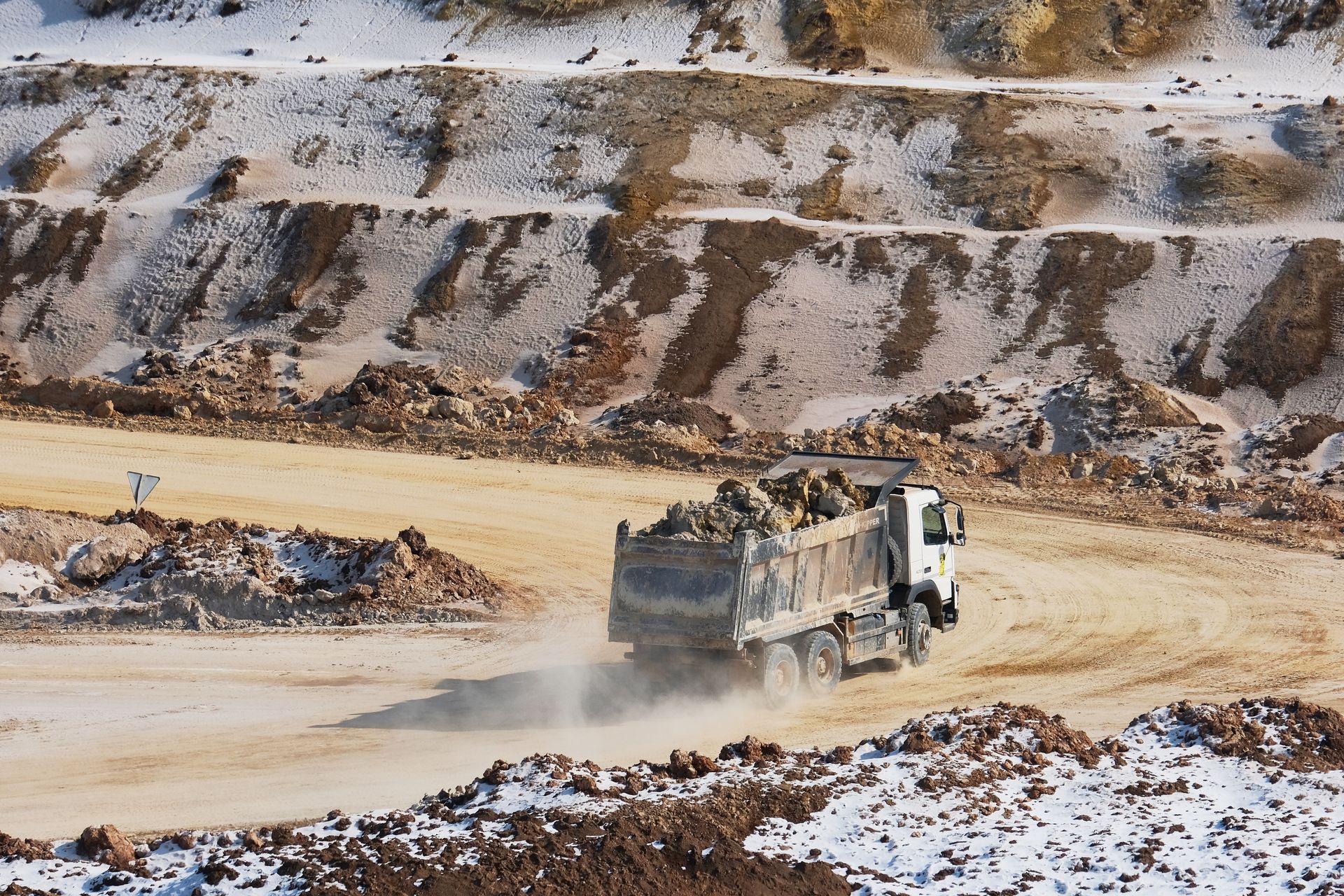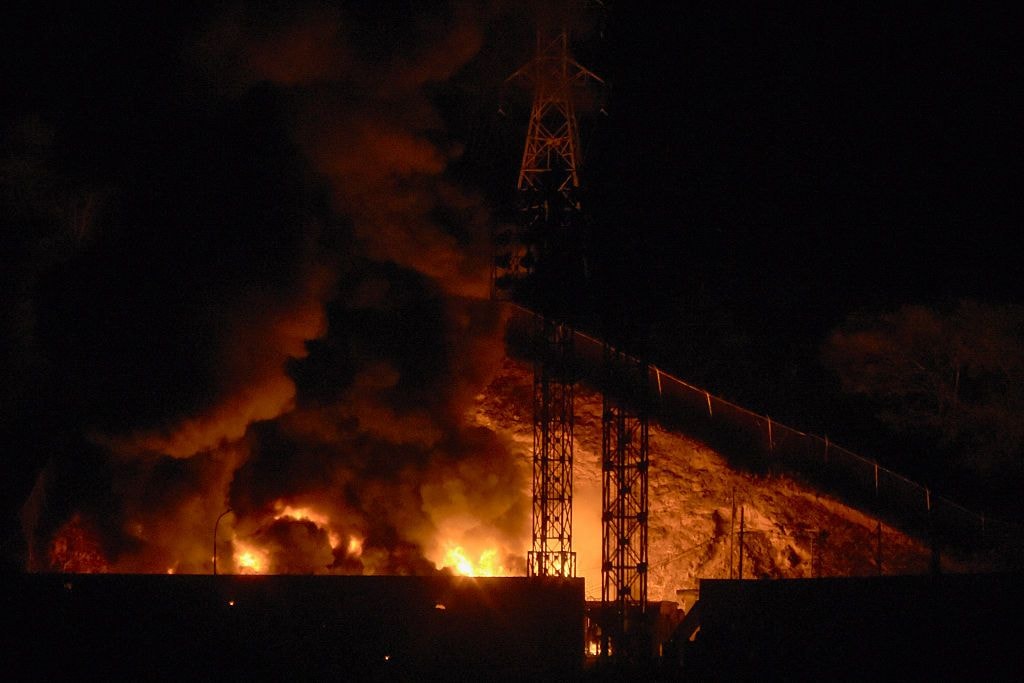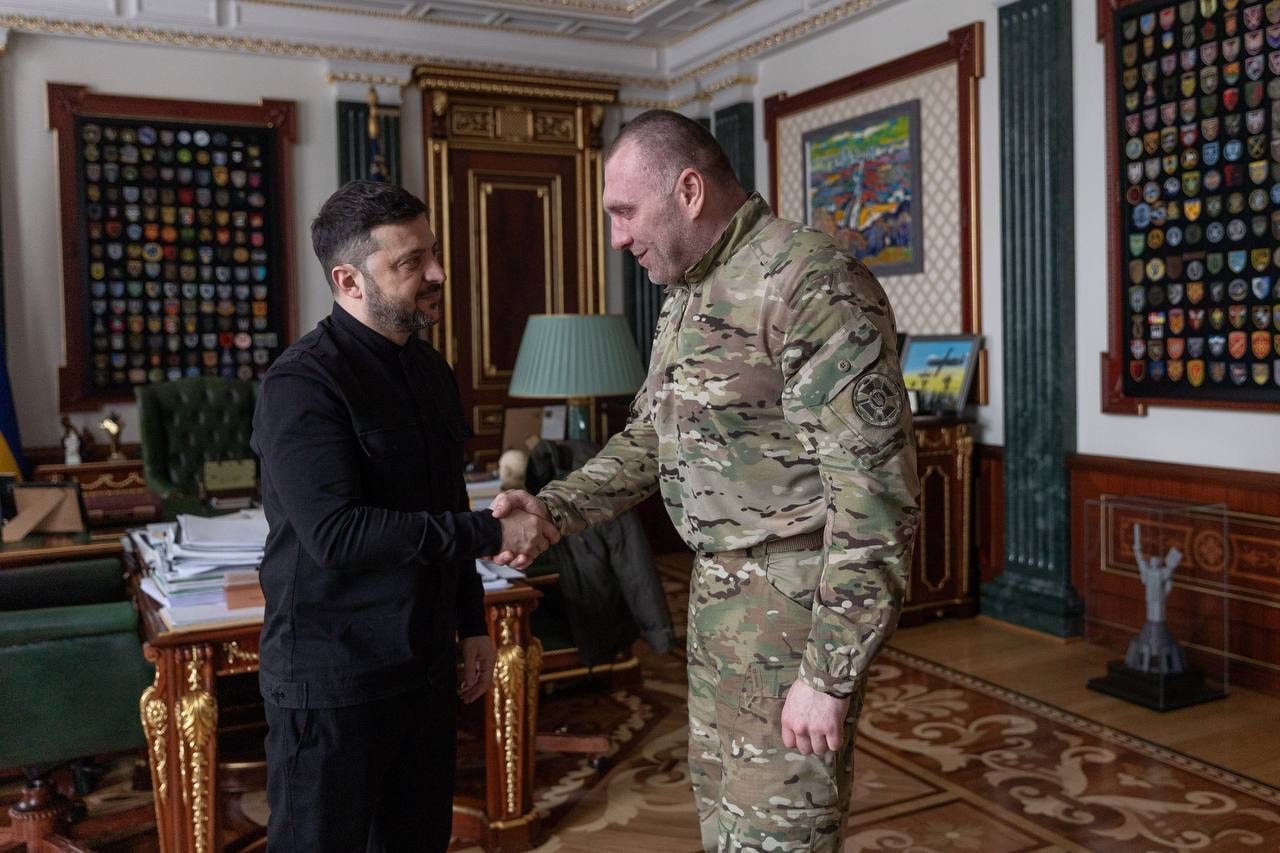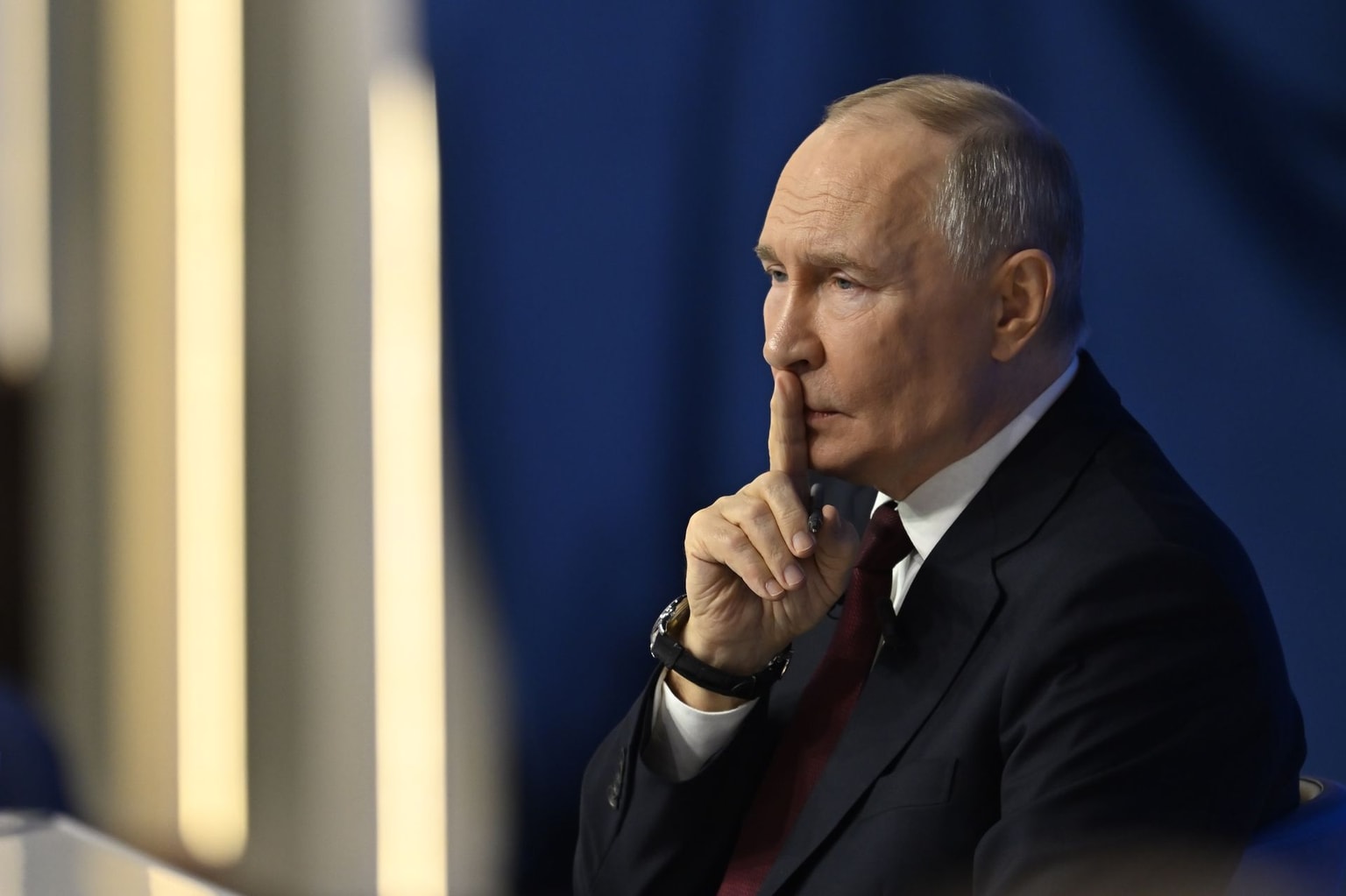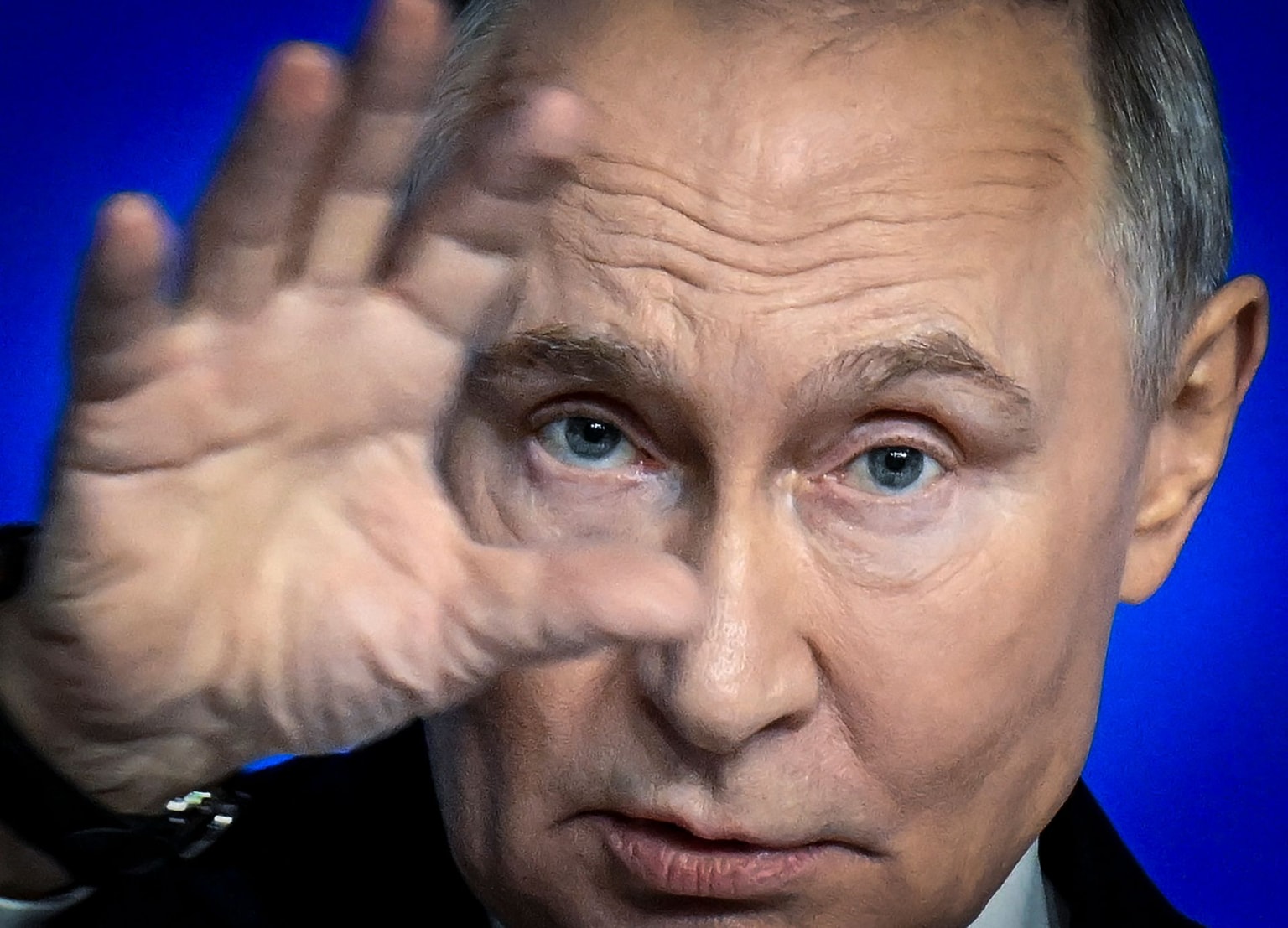Ukraine war latest: Trump says Putin ready to make a peace deal with Ukraine

Key developments on Aug. 14:
- Trump says Putin ready to make a peace deal with Ukraine
- July saw highest civilian casualties in Ukraine since 2022, UN says ahead of Trump-Putin summit
- Russia may be preparing to test nuclear-powered missile ahead of Trump talks, Reuters reports
- 84 Ukrainians return from Russian captivity in latest prisoner swap — some held since 2014
- Ukrainian drone strike sets fire to Russia's Volgograd oil refinery, Kyiv confirms
- Russian Su-30SM fighter jet likely down near Snake Island, Ukrainian Navy says
U.S. President Donald Trump said on Aug. 14 that Russian President Vladimir Putin will come to their Aug. 15 summit in Alaska ready to make a deal to end the war in Ukraine.
"I believe now he's convinced that he's going to make a deal. He's going to make a deal. I think he's going to," Trump told Fox Radio. "And we're going to find out, I'm going to know very quickly."
The talks in Anchorage, Alaska's largest city, will be the first face-to-face meeting between the two leaders since Trump returned to office and Putin's first visit to the U.S. in a decade.
The White House has billed the talks as part of Washington's effort to end the war, though Ukrainian and European officials have expressed concern over Kyiv's exclusion from the summit.
Trump said his goal is to move toward a trilateral meeting with President Volodymyr Zelensky, noting that "three different locations" were under consideration, including Alaska.
Speaking later from the White House, the U.S. president indicated that European leaders might also participate in upcoming peace talks.
"We have a meeting with President Putin tomorrow. I think it's going to be a good meeting, but the more important meeting will be the second meeting that we will be having," he said.
"We're going to have a meeting with President Putin, President Zelensky, myself, and maybe we'll bring some of the European leaders along, maybe not."
While early reporting suggested Zelensky might join the Aug. 15 talks, Trump later confirmed the Ukrainian president would not attend. Zelensky has previously voiced readiness for a three-side format, while Putin has said more groundwork is needed before such a meeting.
Asked if he would offer economic incentives to Russia, Trump declined to give details. He has previously described the summit as a "feel-out" session to gauge Moscow's readiness for peace.
On Aug. 13, Zelensky joined Trump and European leaders in a video call during which Trump pledged to prioritize a ceasefire in talks with Putin. The U.S. president has signaled that any peace agreement would involve "land swaps," a stance that has raised alarms in Kyiv.

A Ukrainian Presidential Office source earlier told the Kyiv Independent that Russia's proposal would require Kyiv to withdraw from Ukrainian-controlled parts of partially occupied Donetsk and Luhansk oblasts in exchange for a Russian pullback from parts of Sumy and Kharkiv oblasts.
Putin has also demanded Ukraine's withdrawal from the Ukrainian-controlled parts of Kherson and Zaporizhzhia oblasts and a ban on NATO membership as preconditions for peace.
The Ukrainian president has rejected handing any new territory into Russian occupation, urging a ceasefire as the first step toward negotiations, a stance supported by Kyiv's European allies.
Russia illegally annexed Ukraine's Crimea in 2014, and in 2022, it further annexed sections of Donetsk, Luhansk, Zaporizhzhia, and Kherson oblasts after conducting illegitimate referenda.
July saw highest civilian casualties in Ukraine since 2022, UN says ahead of Trump-Putin summit
At least 1,674 civilian casualties were recorded in Ukraine in July, setting a new record since the first year of Russia's full-scale invasion, U.N. human rights monitors said on Aug. 13.
The figure includes 286 civilians killed and 1,388 injured, topping a previous record in May 2022, the Office of the U.N. High Commissioner for Human Rights said in a statement.
The figure underscores Russia's intensifying attacks despite U.S. efforts to broker a peace deal and Kyiv's calls for an unconditional ceasefire.
"For the second month in a row, the number of civilian casualties in Ukraine hits a new three-year high," said Danielle Bell, head of the U.N. human rights monitoring mission in Ukraine.
"Only the first three months after the Russian Federation launched its full-scale invasion of Ukraine saw more killed and injured than in this past month."
Russia's use of long-range weapons like missiles and loitering munitions accounted for almost 40% of the casualties, the U.N. said in its report. Short-range drones were the second most common cause of civilian losses, amounting to 24%.
The surge in casualty figures took place mainly in Ukrainian front-line areas, a trend the monitors connected to Russia's intensified offensive operations.
Russia also carried out a number of deadly mass strikes against Kyiv and other major cities the previous month. On July 31, Russian forces launched a combined missile and drone strike on Kyiv, killing 32 people and injuring almost 180.
The strike marked the highest number of children injured in a single attack against the capital. It was also the deadliest strike against the capital of the year, and the second deadliest of the war after the December 2023 attack on Kyiv that killed 33 people.
According to the U.N., casualty figures in the first seven months of 2025 were 48% higher than during the same period last year.
The U.N. has documented nearly 14,000 civilians killed and over 35,500 injured during the full-scale war, though the real figure is likely much higher as Russia prevents independent monitoring in some of the most war-affected regions.
Ukraine faces an increasingly dire situation in the war as Russia makes rapid advances in eastern Donetsk Oblast, while Kyiv's own forces suffer manpower shortages.
The summer also saw Russia ramp up its aerial strikes across Ukraine, drawing criticism from U.S. President Donald Trump, who threatened to impose new punishing sanctions unless Russian President Vladimir Putin agreed to a ceasefire deal.
While Trump announced no new measures by his own Aug. 8 deadline, he is scheduled to meet Putin in Alaska on Aug. 15 to discuss a possible settlement of the war in Ukraine. This will be the first face-to-face meeting between the two leaders since Trump returned to office in January.
Russia may be preparing to test nuclear-powered missile ahead of Trump talks, Reuters reports
Russia appears to be preparing to test its new nuclear-armed, nuclear-powered cruise missile just days before Russian President Vladimir Putin is set to meet U.S. President Donald Trump in Alaska, Reuters reported on Aug. 14, citing two U.S. researchers and an unnamed security source.
Jeffrey Lewis of the Middlebury Institute of International Studies and Decker Eveleth of the CNA research organization told Reuters that Planet Labs' satellite imagery taken in recent weeks shows extensive activity at the Pankovo test site on the Novaya Zemlya archipelago in the Arctic Ocean.
The imagery reportedly reveals equipment, personnel, ships, and aircraft associated with earlier tests of the 9M730 Burevestnik, known to NATO as the SSC-X-9 Skyfall.
The undisclosed Western security source confirmed to the outlet that Russia is preparing a Burevestnik test.
Lewis said a test could occur this week, potentially overshadowing the Aug. 15 meeting in Alaska, where Putin and Trump are expected to discuss Ukraine, economic cooperation, and global security.
The White House did not address the possibility of a missile test, and the Pentagon, CIA, and Russia's Defense Ministry declined to comment, according to Reuters.
Putin has previously described the Burevestnik as "invincible" to missile defenses, with an almost unlimited range and unpredictable flight path.
Analysts say the program has gained importance for Moscow since Trump announced plans in January to develop the Golden Dome U.S. missile defense shield, though experts question the missile's reliability and warn of potential radioactive fallout.
Reuters reported that Planet Labs imagery showed stacks of shipping containers, cranes, and a helicopter at the launch site, as well as two radar-equipped aircraft parked at Rogachevo military airfield in Novaya Zemlya since mid-July.
Vessel-tracking data also indicated a cargo ship linked to earlier tests was bound for Novaya Zemlya this week.
Norway's military told Reuters the Barents Sea is a "prime location for Russian missile tests" and noted indications of "preparations for test activities," without confirming the type of munitions. Notices to mariners and airmen suggest a possible launch window from Aug. 9 to Aug. 22.
The Burevestnik, described by the International Institute for Strategic Studies as a developmental nuclear-powered, nuclear-armed cruise missile, could give Russia a unique intercontinental-range strike capability if it overcomes significant technical hurdles, including a history of failed tests and a 2019 accident that killed several nuclear specialists.
Designed to fly at very low altitudes for up to 20,000 km (12,400 miles), the missile could evade air defenses and strike targets from anywhere in Russia.
84 Ukrainians return from Russian captivity in latest prisoner swap — some held since 2014
Ukraine has secured the return of 84 soldiers and civilians from Russian captivity in a new prisoner swap with Moscow, President Volodymyr Zelensky announced on Aug. 14.
The news follows a series of exchanges carried out in the past months, which had been agreed upon during talks between Russia and Ukraine in Istanbul between May and July.
"Among the civilians released today are those who had been held by the Russians since 2014, 2016, and 2017," Zelensky said. "Among the military (personnel) released today are the defenders of Mariupol."
Almost all of the newly released require medical care and rehabilitation, he added.
Thirty-three military service members and 51 civilians were freed in the latest exchange, Ukraine's Coordination Headquarters for the Treatment of Prisoners of War (POW) said.
They include those captured before the start of Russia's full-scale invasion in 2022 and sentenced to prison sentences of up to 18 years. One of the freed Ukrainians spent 4,013 days in Russian captivity, according to the Coordination Headquarters.
Russia's Defense Ministry also confirmed the swap, saying that 84 Russian service members were exchanged for 84 Ukrainians.
Among them are three women from the Donetsk and Luhansk oblasts and a man who was imprisoned in 2016 at the age of 18. The youngest released person is 26 years old, while the oldest is 74.
Russia has occupied parts of the eastern Donbas region and Crimea since 2014, subjecting their population to political repression and widespread human rights abuses.
As part of the exchange, Volodymyr Cherkas and Vitalii Atamanchuk were returned to Ukraine, their relatives told the Kyiv Independent. Both men were accused by Russia of allegedly spying for Kyiv.
Cherkas, 65, was illegally detained in 2017 in Russian-occupied Donetsk. In the summer of 2024, just as he was about to be released, he was seized by two men in masks and taken away.
Since then, his family had no information about his whereabouts. His wife and five children, three of them minors, had been waiting for the man at home.
Atamanchuk, 74, became the oldest person in the swap. He was also illegally arrested in 2018 in Donetsk. His wife and son had been taken with him but were later released. Despite his age and poor health, Atamanchuk remained in captivity.
Russian-installed authorities sentenced Atamanchuk to 2035. His daughter, Olena, told the Kyiv Independent that her father could not even walk on his own in prison due to illness. His wife, Nadiia, had been waiting for him throughout his years in captivity.
The exchange takes place a day before a high-stakes summit between U.S. President Donald Trump and Russian President Vladimir Putin in Alaska, part of Washington's efforts to end the war in Ukraine.
The Ukraine-Russia peace talks earlier this year have failed to achieve a breakthrough in ending the hostilities, but concluded with new agreements on prisoner swaps.
Zelensky announced earlier this month that Ukraine and Russia are preparing to exchange 1,200 POWs in accordance with the third round of peace talks in Istanbul on July 23.
The president also said late in July that Kyiv has secured the release of over 6,400 Ukrainians from Russian captivity since 2022, of whom 5,857 were freed during prisoner exchanges.
Ukrainian drone strike sets fire to Russia's Volgograd oil refinery, Kyiv confirms
Ukrainian forces struck a refinery in the Russian city of Volgograd overnight on Aug. 14, causing powerful fires at the facility, Ukraine's General Staff reported.
The refinery processes over 15 million metric tons of oil every year, amounting to 5.6% of Russia's refining capacity, the military said. The Lukoil plant produces diesel, gasoline, and aviation fuel, crucial for Russian military logistics.
The attack was carried out in cooperation between the Unmanned Systems Forces, military intelligence (HUR), and other branches, the General Staff said.
Russian officials reported on an attack against the refinery earlier in the day. Volgograd Oblast Governor Andrey Bocharov said the strike caused an oil spill and fire at the premises.
"Tonight, the air defense forces of the Russian Defense Ministry repelled a massive UAV (unmanned aerial vehicle) attack on the territory of Volgograd Oblast," Bocharov said.
"As a result of falling debris, oil products spilled and caught fire at the Volgograd Oil Refinery. Firefighters quickly began extinguishing the fire."
Preliminary information indicates there are no casualties, Bocharov said.
The Volgograd refinery, owned by Russian oil giant Lukoil, has been targeted multiple times throughout the full-scale war. Russian media and officials reported attacks on the facility in both February and March 2025. Ukraine's General Staff confirmed a drone strike against the refinery in January.
Ukraine regularly launches long-range drone attacks on industrial and military facilities in Russia. Oil refineries, which fund and fuel Moscow's war machine, are frequent targets of these strikes.
Three Russian refineries have cut or suspended operations this month due to damage sustained from Ukrainian drone attacks, according to media reports. Bloomberg reported that a Rosneft facility in Saratov Oblast halted oil intake after a strike on Aug. 10.
Russia's Ryazan refinery also decreased its production by half while the Novokuibyshevsk refinery halted production completely on Aug. 2, Reuters reported.
Russian Su-30SM fighter jet likely down near Snake Island, Ukrainian Navy says
Russia has likely lost a Su-30SM fighter jet while conducting a mission southeast of Snake Island, the Ukrainian Navy said on Aug. 14.
The twin-engine, two-seat aircraft – designed for both air superiority and ground attack –reportedly crashed for unknown reasons.
According to the Navy, Ukrainian intelligence intercepted radio communications indicating the loss of contact with the aircraft. Russian forces have launched a search and rescue operation, and debris was reportedly spotted on the sea surface. The pilots remain missing, Kyiv said.
Snake Island, located 35 kilometers (22 miles) off Ukraine's Odesa Oblast, was seized by Russian forces in the first days of the full-scale invasion.
Its capture allowed Moscow to blockade Odesa's Black Sea ports and conduct missile strikes against Ukraine from the island until Russian troops withdrew in June 2022.
The loss adds to a growing list of Russian Su-30 aircraft destroyed or damaged during the war.
Earlier on May 2, Ukraine said it downed two Su-30 jets with air-to-air missiles fired from sea drones near Novorossiysk, and claimed to have likely damaged another Su-30 at an airfield used for Kinzhal missile launches on May 9.
Note from the author:
Ukraine War Latest is put together by the Kyiv Independent news desk team, who keep you informed 24 hours a day, seven days a week. If you value our work and want to ensure we have the resources to continue, join the Kyiv Independent community.



